Shopping Cart
Remove All Your shopping cart is currently empty
Your shopping cart is currently empty
Anti-Caspase-14 Antibody (3A777) is a Rabbit antibody targeting Caspase-14. Anti-Caspase-14 Antibody (3A777) can be used in FCM,ICC/IF,IHC,IP,WB.
| Pack Size | Price | USA Warehouse | Global Warehouse | Quantity |
|---|---|---|---|---|
| 50 μL | $296 | 7-10 days | 7-10 days | |
| 100 μL | $497 | 7-10 days | 7-10 days |
| Description | Anti-Caspase-14 Antibody (3A777) is a Rabbit antibody targeting Caspase-14. Anti-Caspase-14 Antibody (3A777) can be used in FCM,ICC/IF,IHC,IP,WB. |
| Synonyms | caspase 14, apoptosis-related cysteine peptidase, ARCI12 |
| Ig Type | IgG |
| Clone | 3A777 |
| Reactivity | Human,Mouse,Rat |
| Verified Activity | 1. Western blot analysis of Caspase-14 on MCF-7 cells lysates using anti-Caspase-14 antibody at 1/1,000 dilution. 2. Immunohistochemical analysis of paraffin-embedded mouse skin tissue using anti-Caspase-14 antibody. Counter stained with hematoxylin. 3. ICC staining Caspase-14 in HepG2 cells (green). The nuclear counter stain is DAPI (blue). Cells were fixed in paraformaldehyde, permeabilised with 0.25% Triton X100/PBS. 4. ICC staining Caspase-14 in MCF-7 cells (green). The nuclear counter stain is DAPI (blue). Cells were fixed in paraformaldehyde, permeabilised with 0.25% Triton X100/PBS. 5. ICC staining Caspase-14 in A431 cells (green). The nuclear counter stain is DAPI (blue). Cells were fixed in paraformaldehyde, permeabilised with 0.25% Triton X100/PBS. 6. Flow cytometric analysis of A431 cells with Caspase-14 antibody at 1/50 dilution (red) compared with an unlabelled control (cells without incubation with primary antibody; black). Alexa Fluor 488-conjugated goat anti rabbit IgG was used as the secondary antibody.  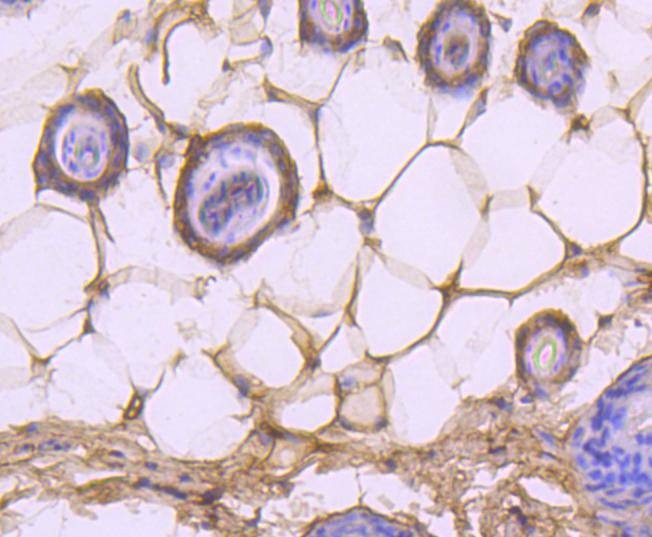 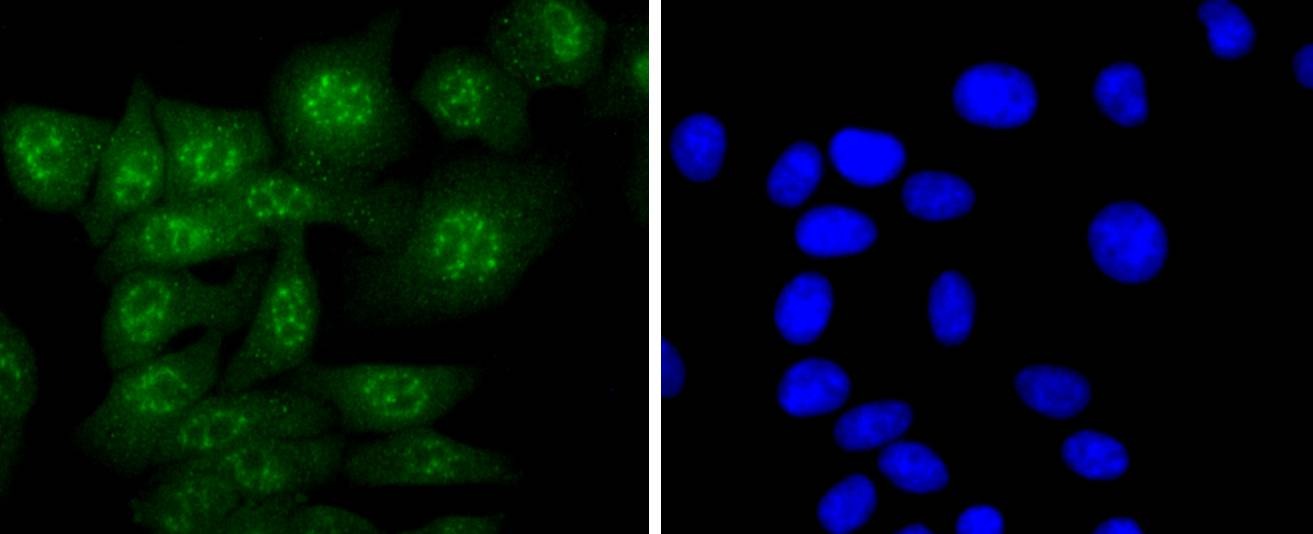 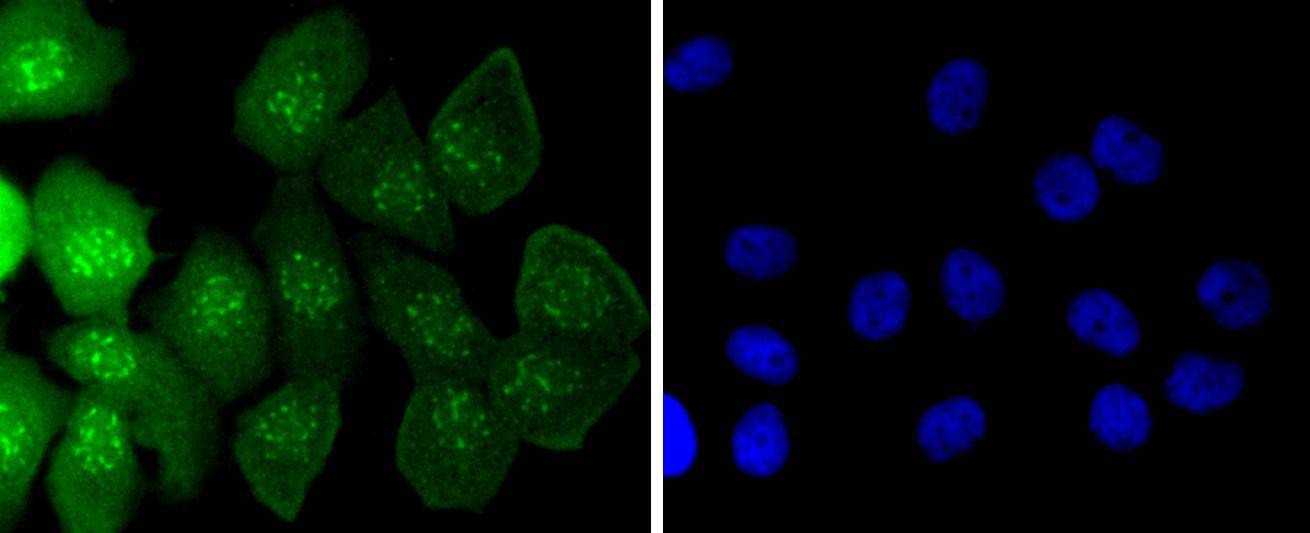 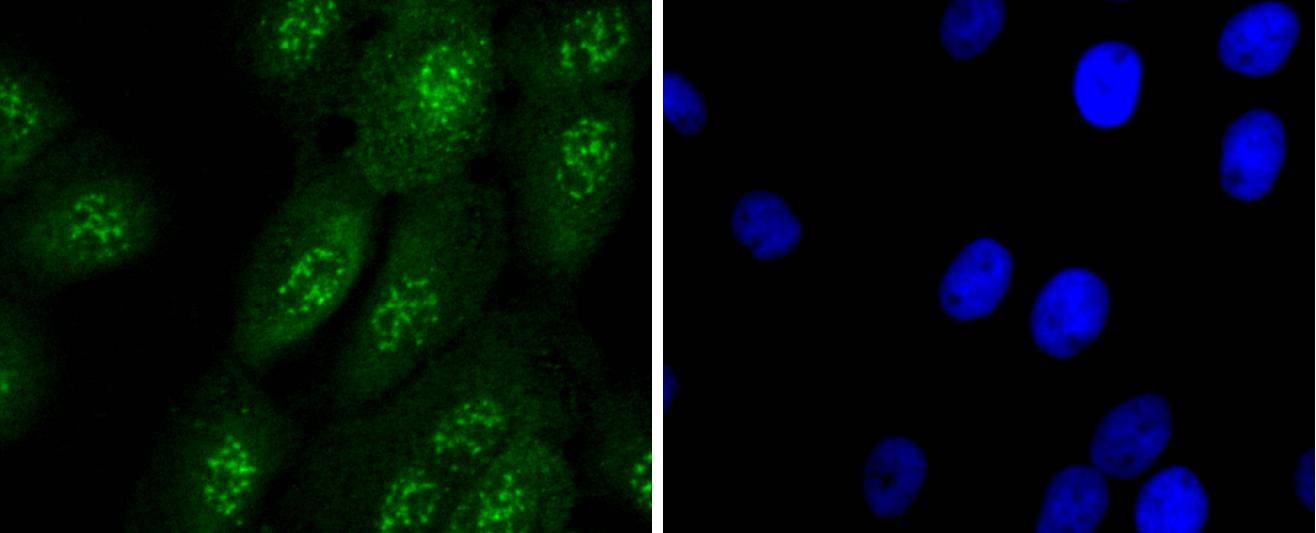 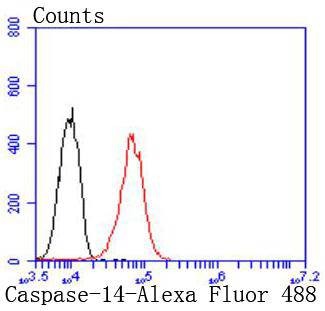 |
| Application | |
| Recommended Dose | WB: 1:1000; IHC: 1:50-200; ICC/IF: 1:50-200; FCM: 1:50-100 |
| Antibody Type | Monoclonal |
| Host Species | Rabbit |
| Construction | Recombinant Antibody |
| Purification | ProA affinity purified |
| Appearance | Liquid |
| Formulation | 1*TBS (pH7.4), 1%BSA, 40%Glycerol. Preservative: 0.05% Sodium Azide. |
| Research Background | A unique family of cysteine proteases has been described that differs in sequence, structure and substrate specificity from any previously described protease family. This family, Ced-3/caspase-1, is composed of caspase-1, caspase-2, caspase-3, caspase-4, caspase-6 and caspase-7 (also designated Mch3, ICE-LAP3 or CMH-1), caspase-9, caspase-10, and caspase-14. Ced-3/caspase-1 family members function as key components of the apoptotic machinery and act to destroy specific target proteins which are critical to cellular longevity. Caspase-3, caspase-7 and caspase-9, but not caspase-1, have been shown to cleave the nuclear protein PARP into an apoptotic fragment. Caspase-14, also designated MICE (for mini-ICE), is highly expressed in embryonic tissues but appears to be absent from adult tissues. Procaspase-14 can be processed in vitro by caspase-8 and caspase-10 but not by other caspases. |
| Conjucates | Unconjugated |
| Immunogen | Recombinant Protein |
| Uniprot ID |
| Molecular Weight | Theoretical: 28 kDa. |
| Stability & Storage | Store at -20°C or -80°C for 12 months. Avoid repeated freeze-thaw cycles. |
| Transport | Shipping with blue ice. |
| Size | Quantity | Unit Price | Amount | Operation |
|---|

Copyright © 2015-2025 TargetMol Chemicals Inc. All Rights Reserved.